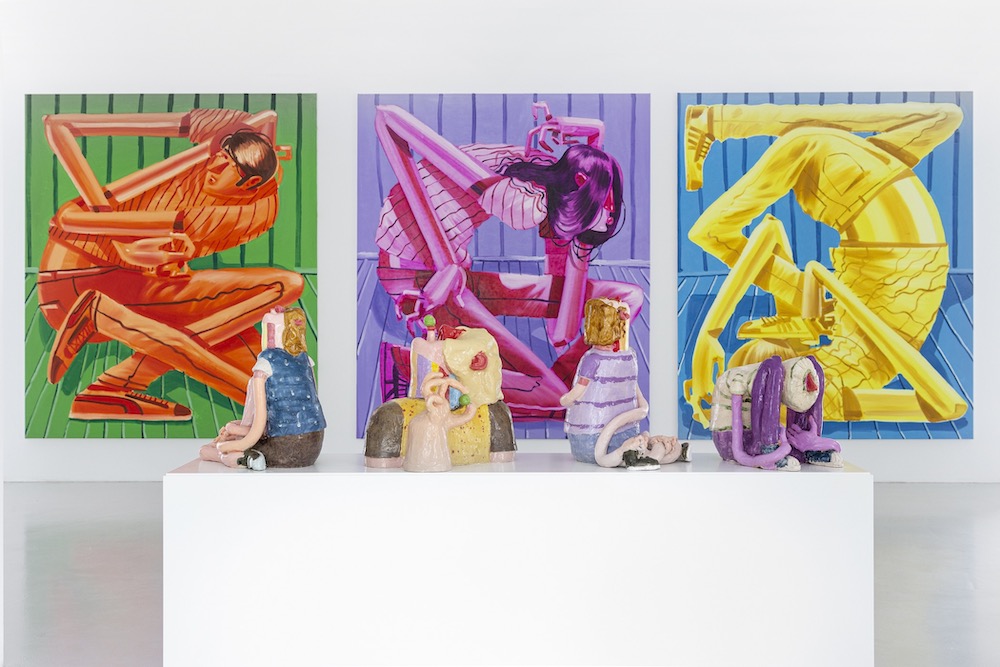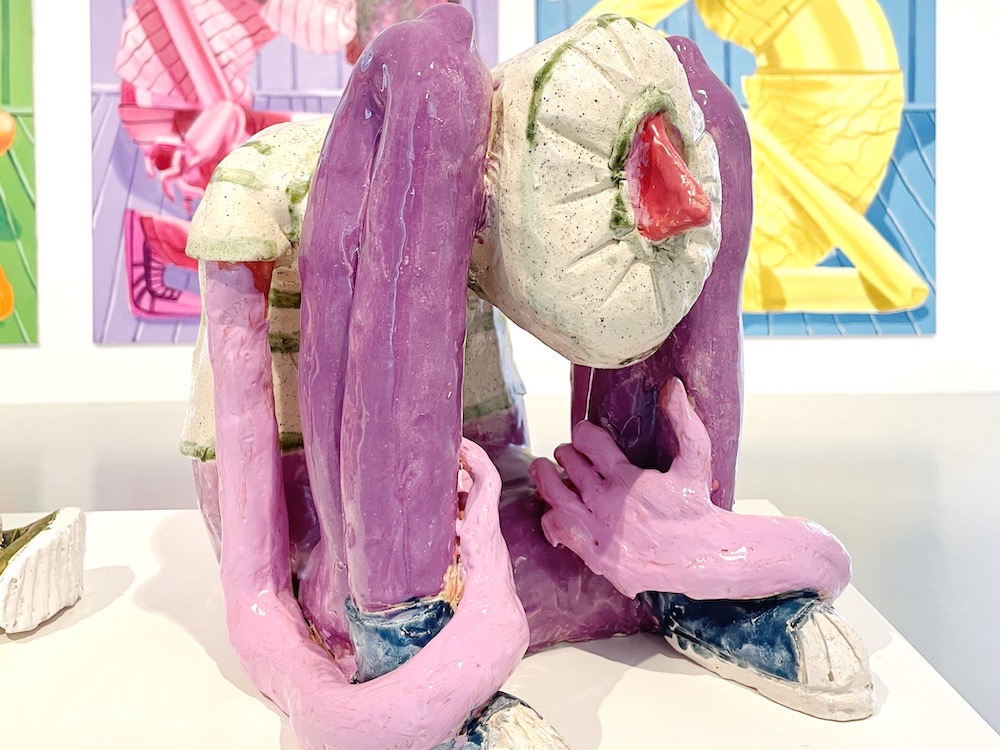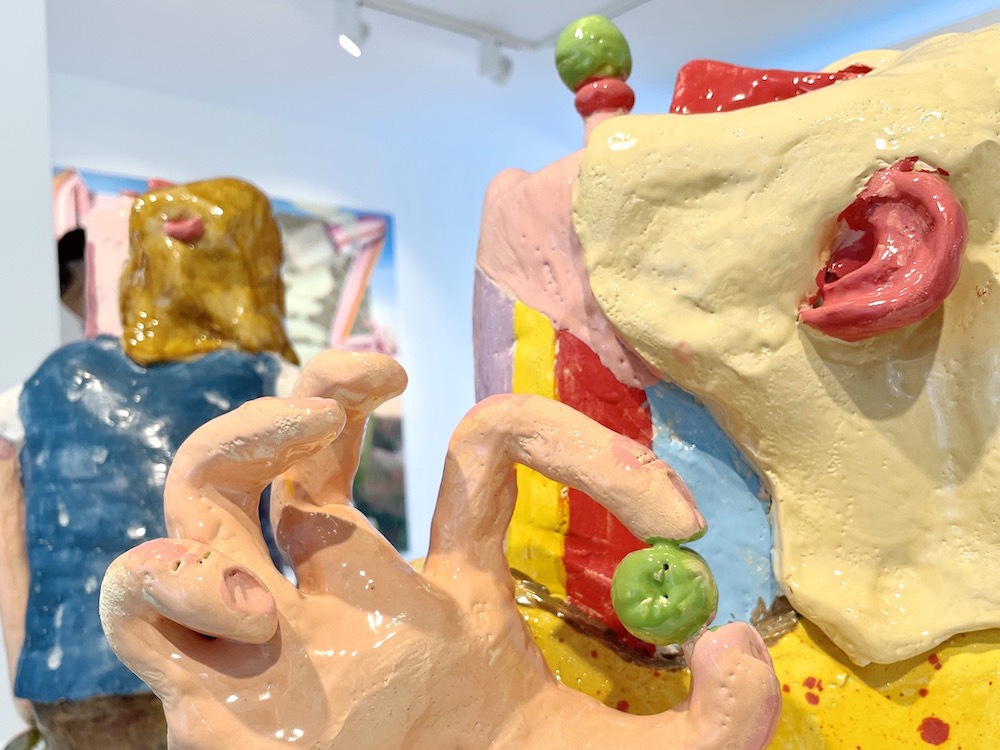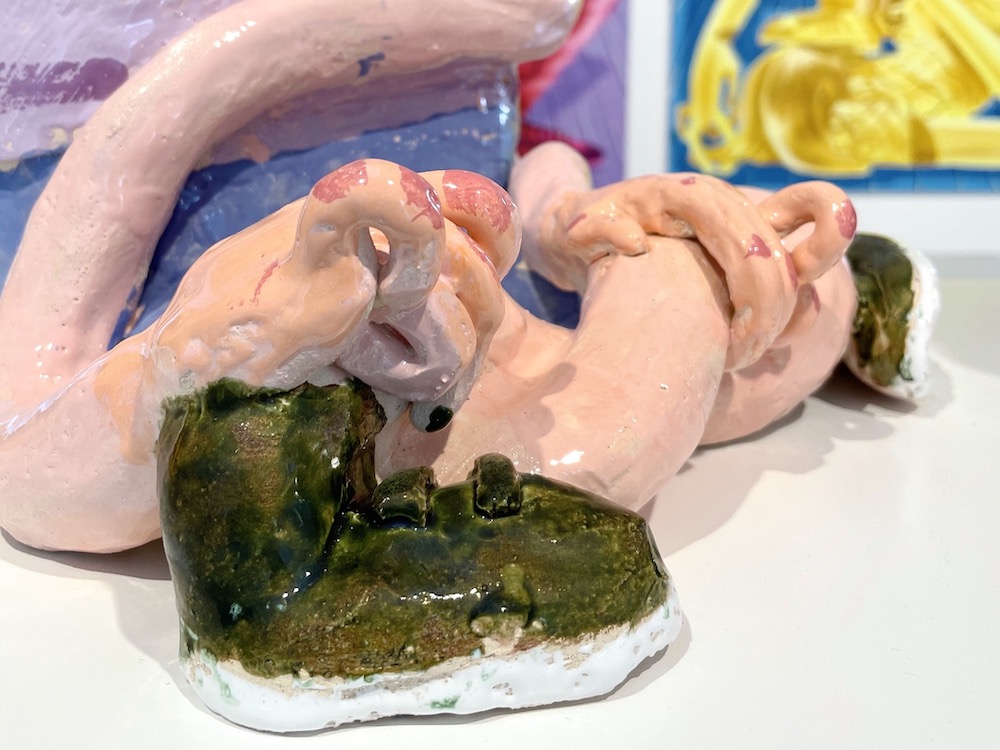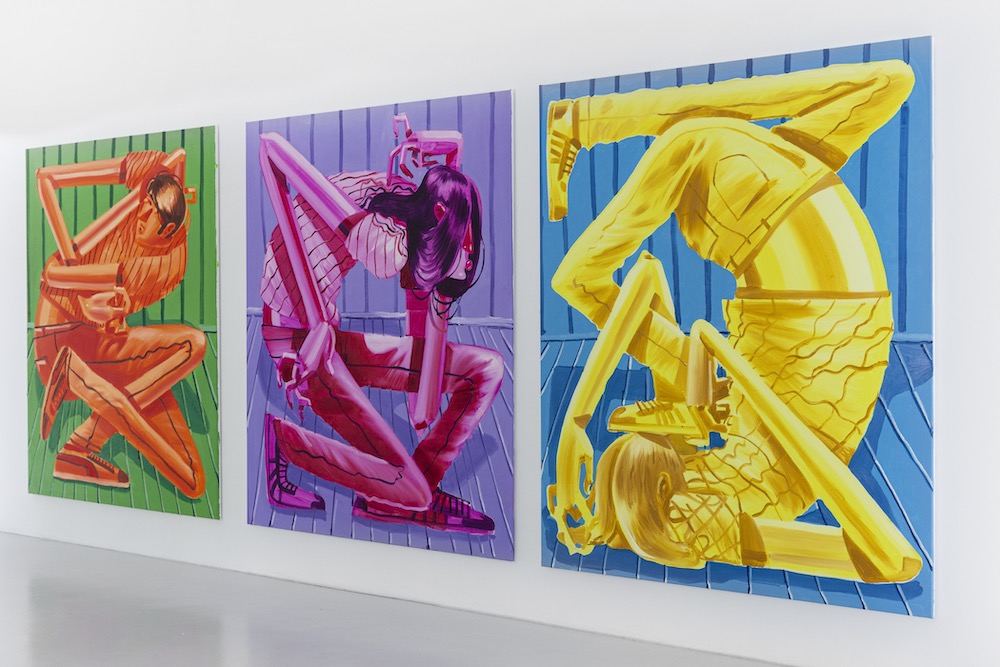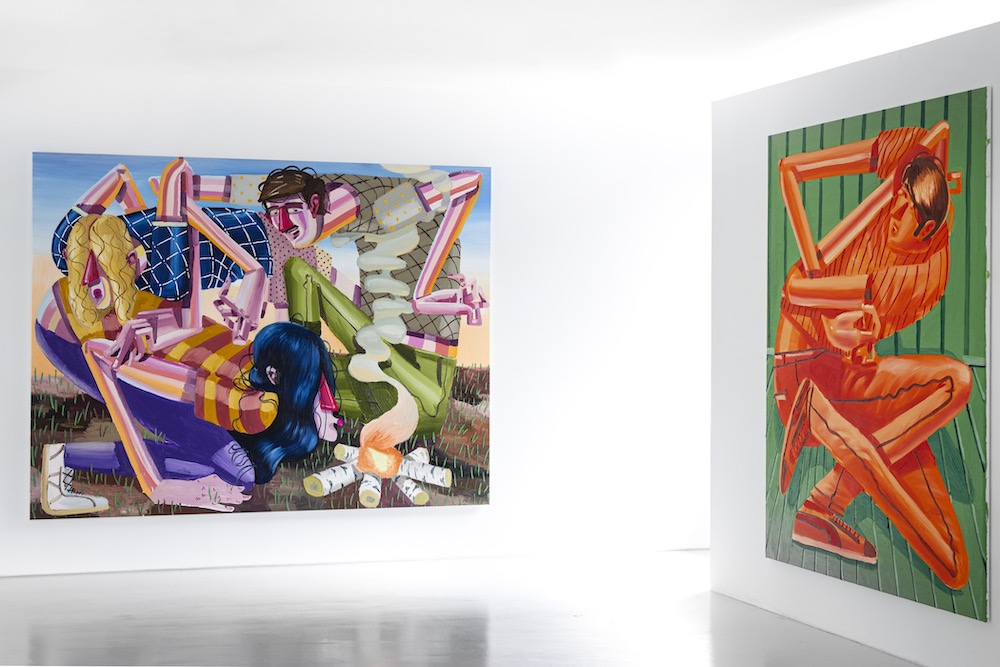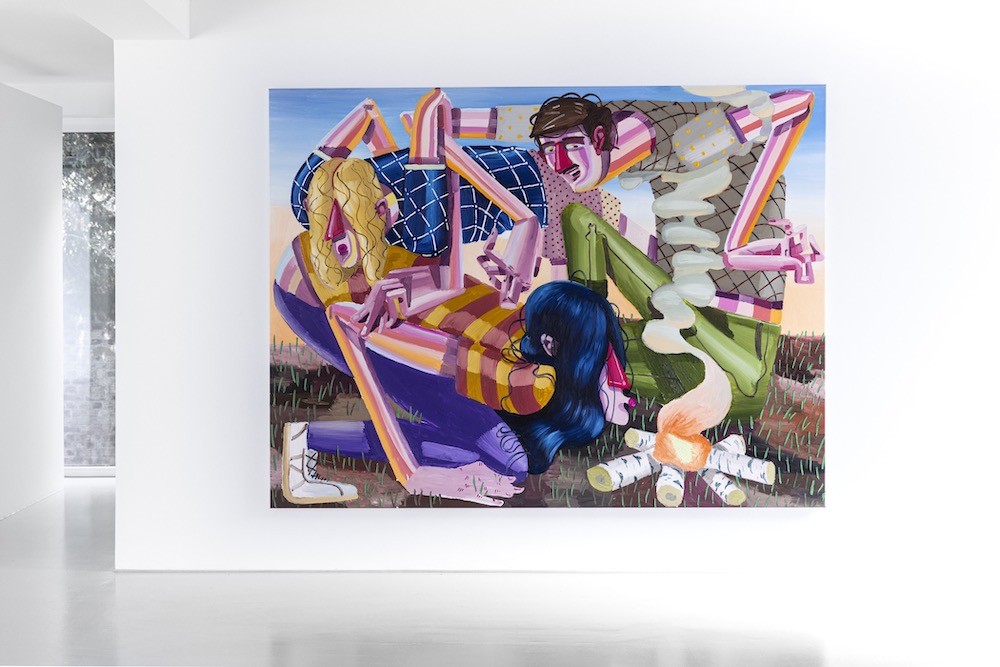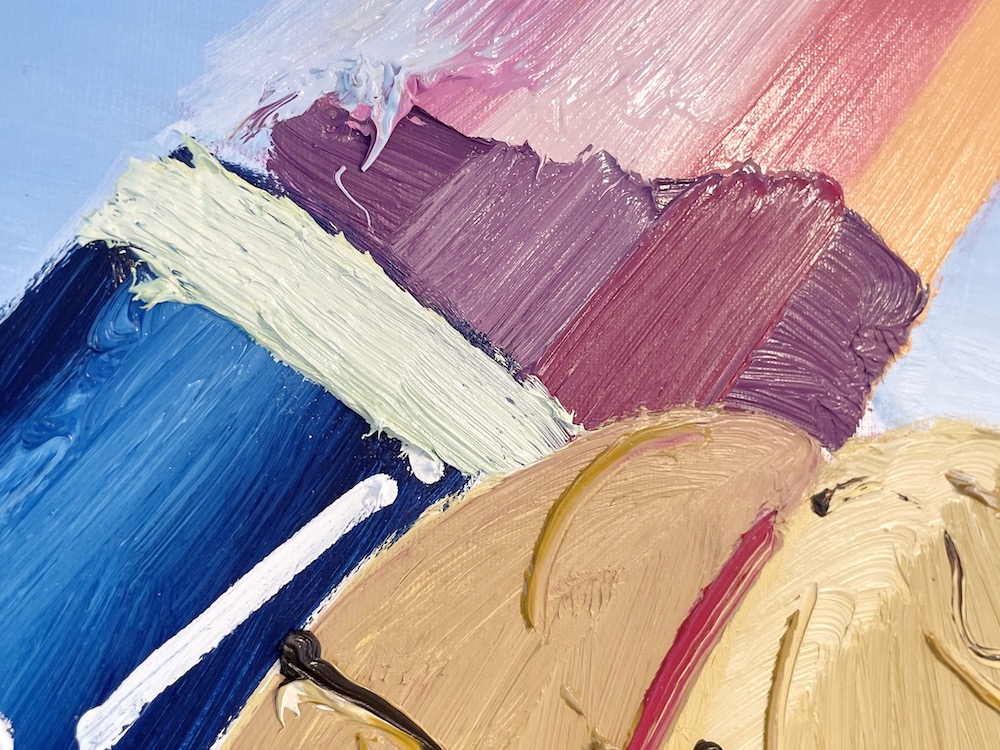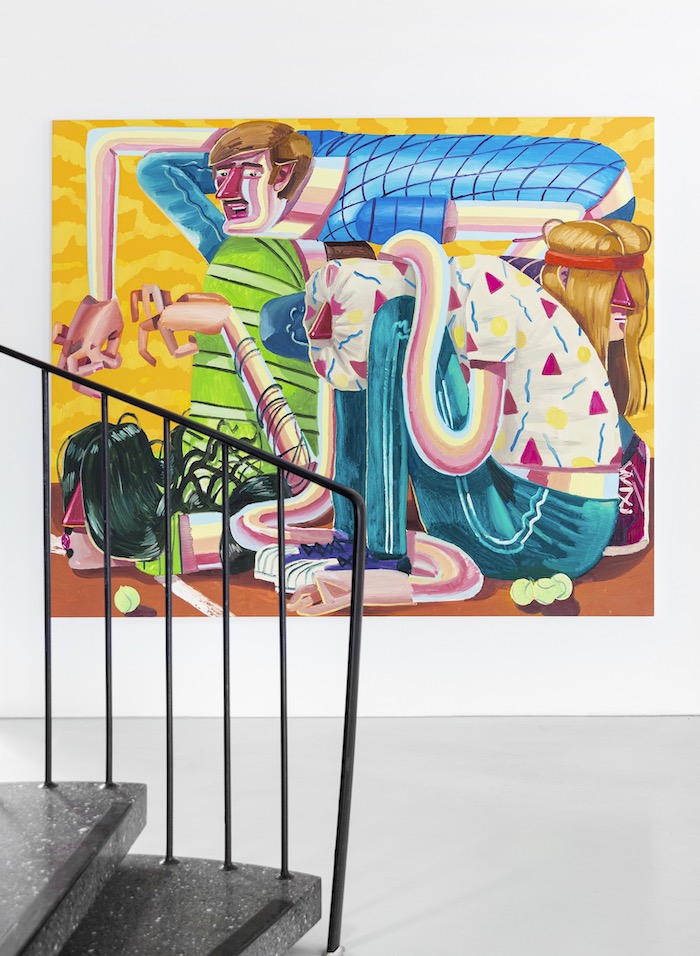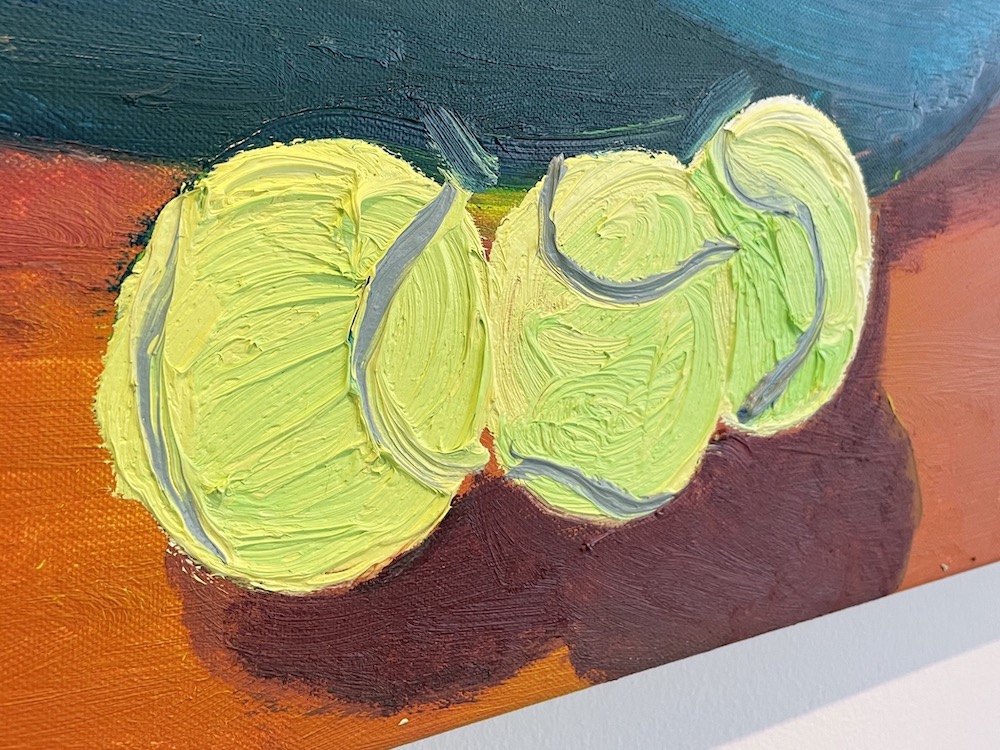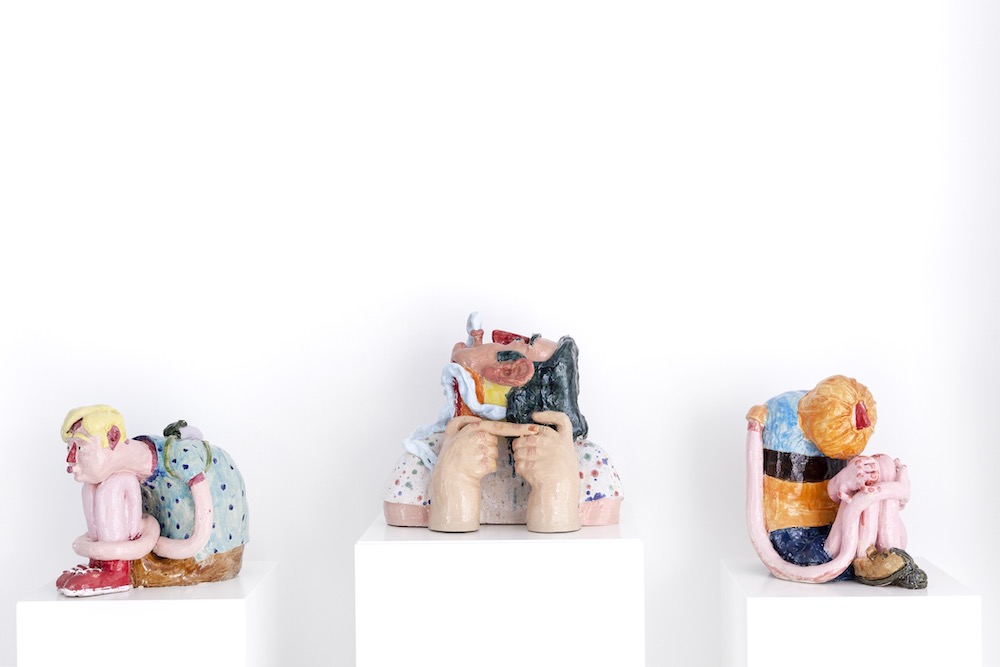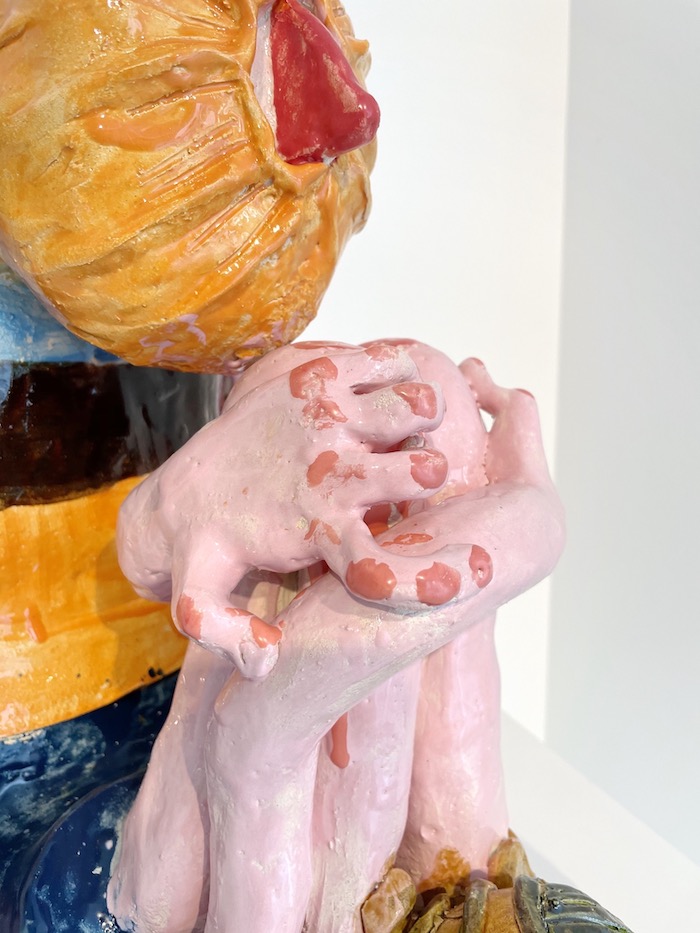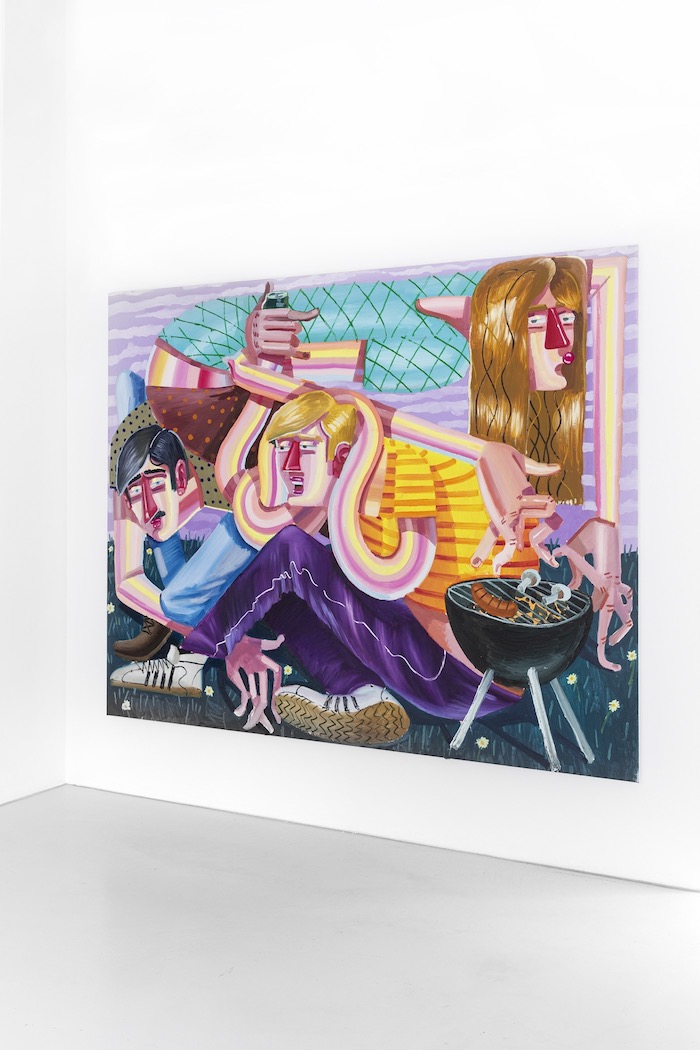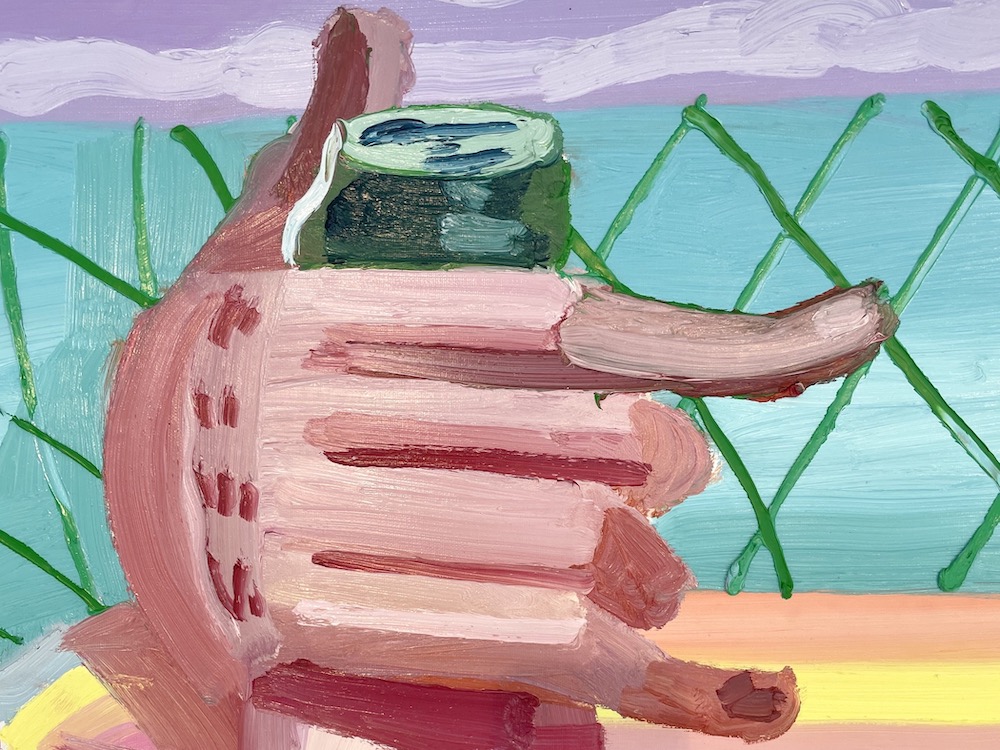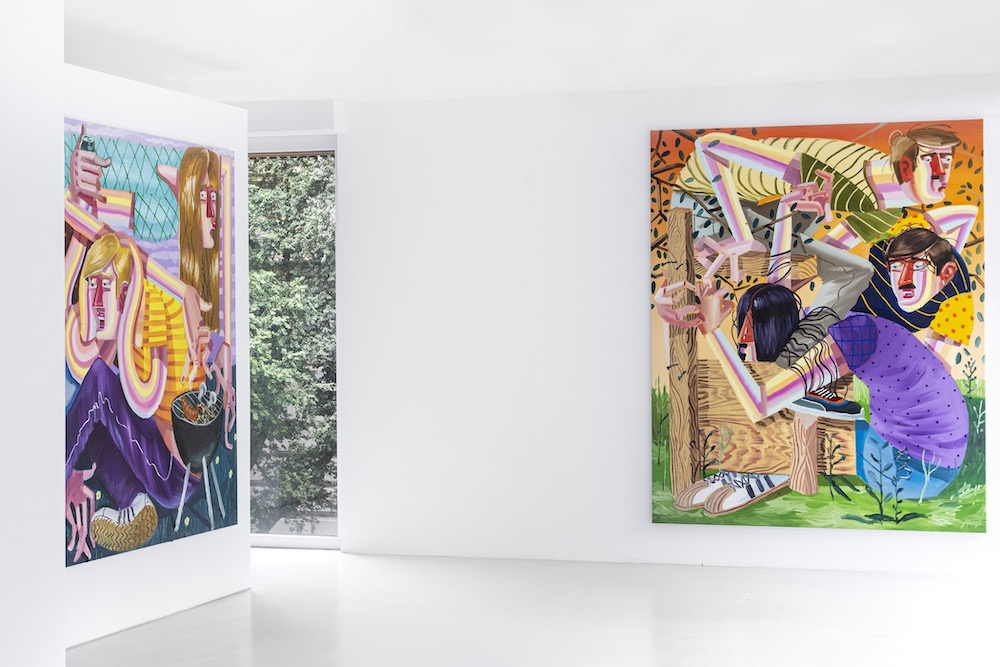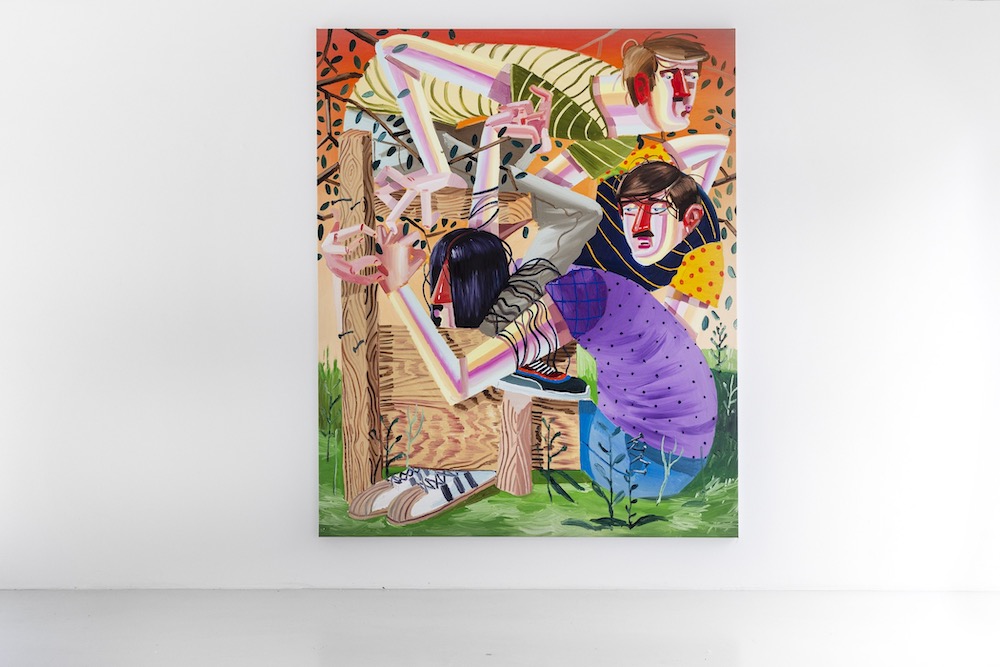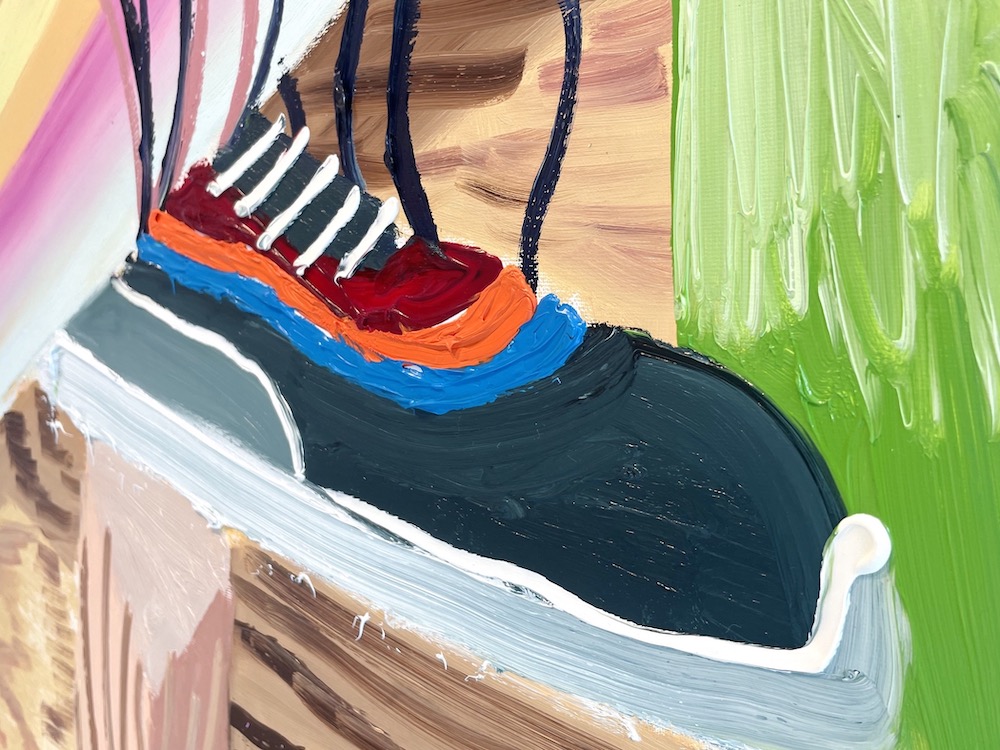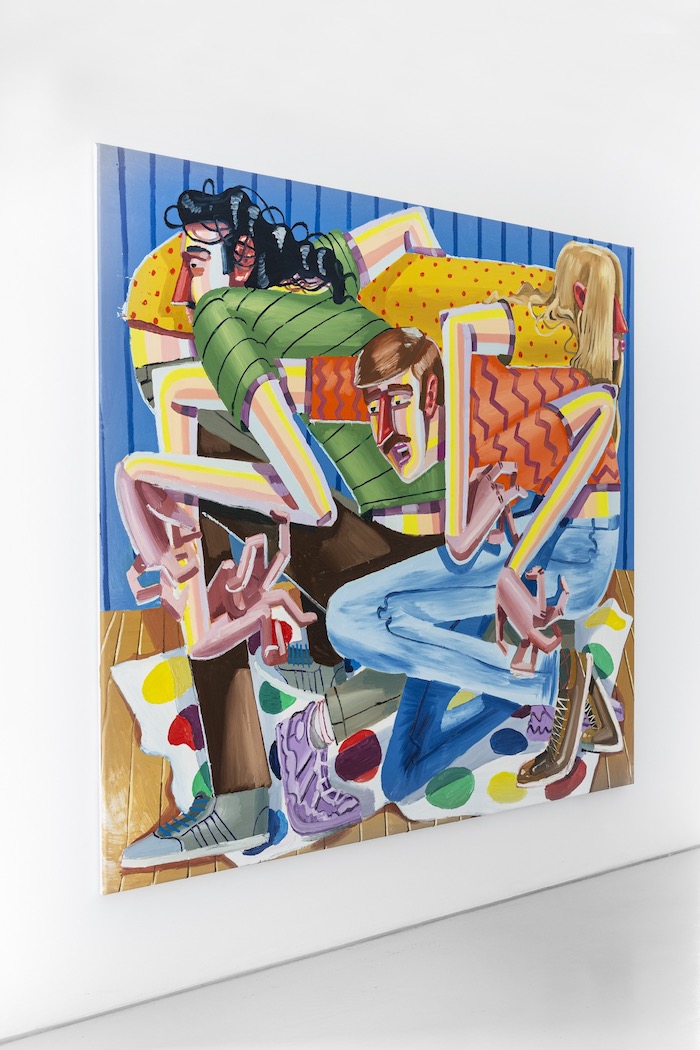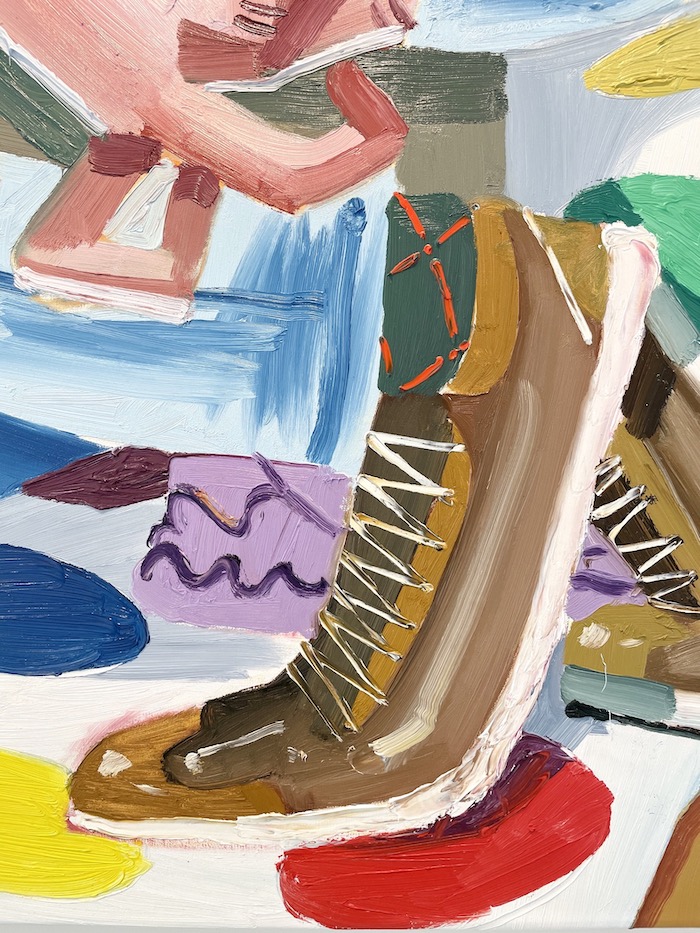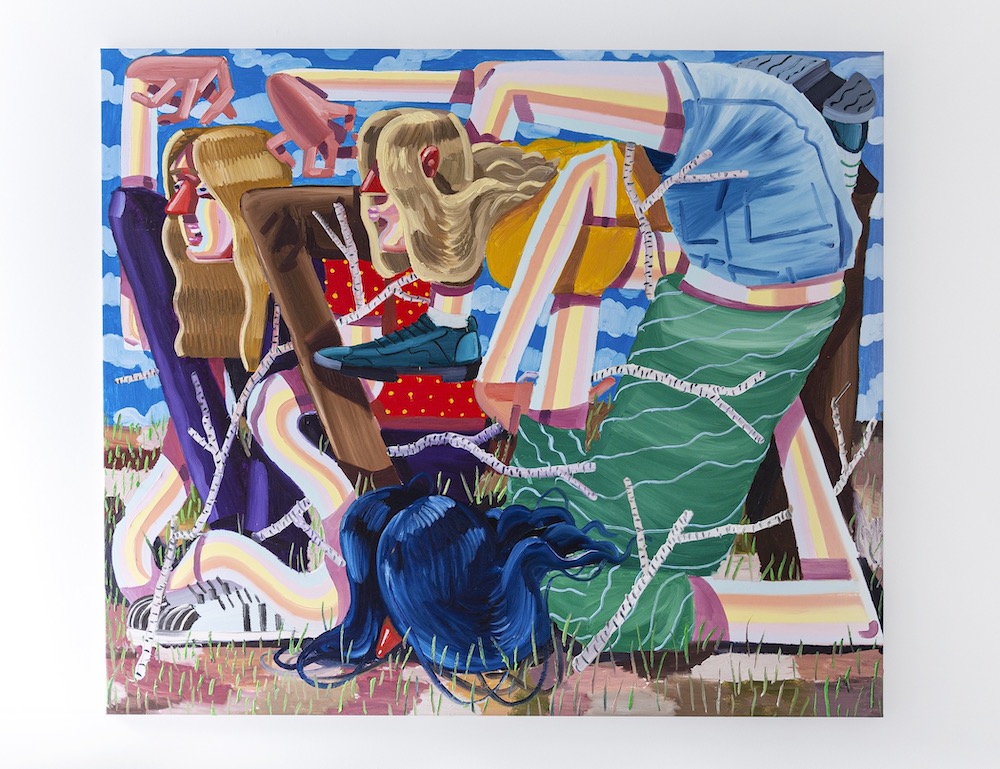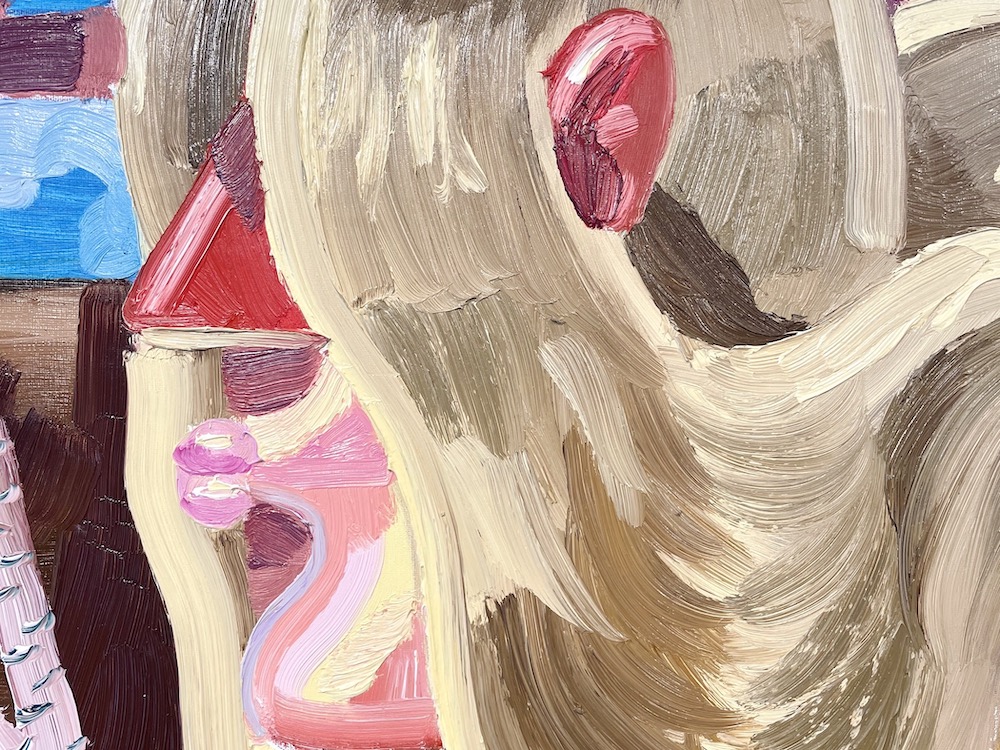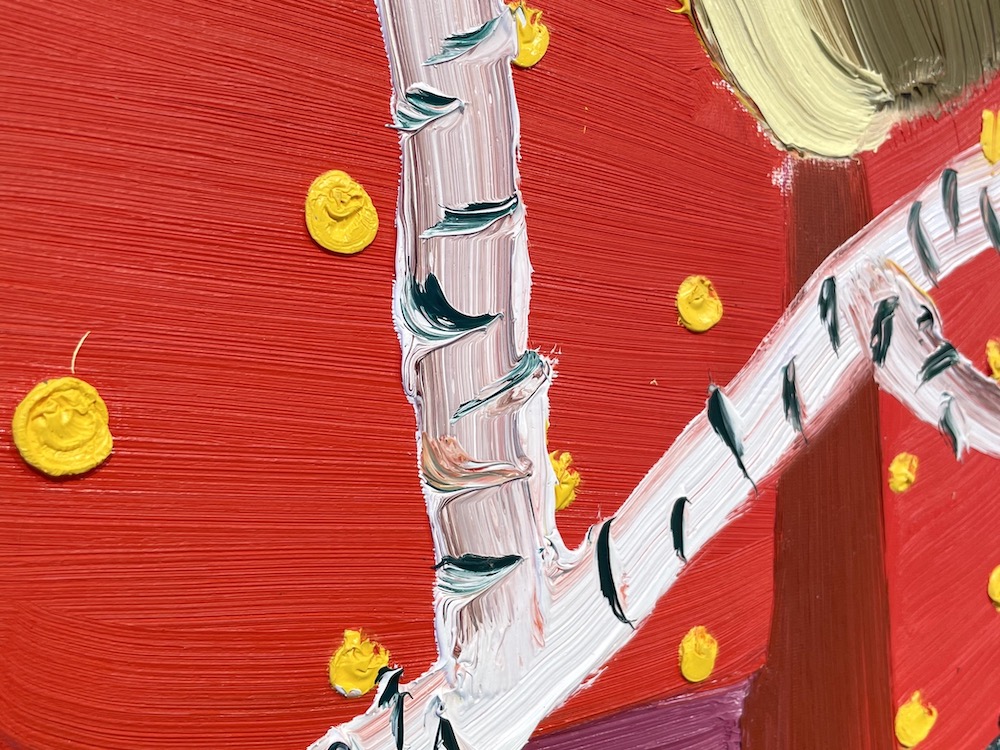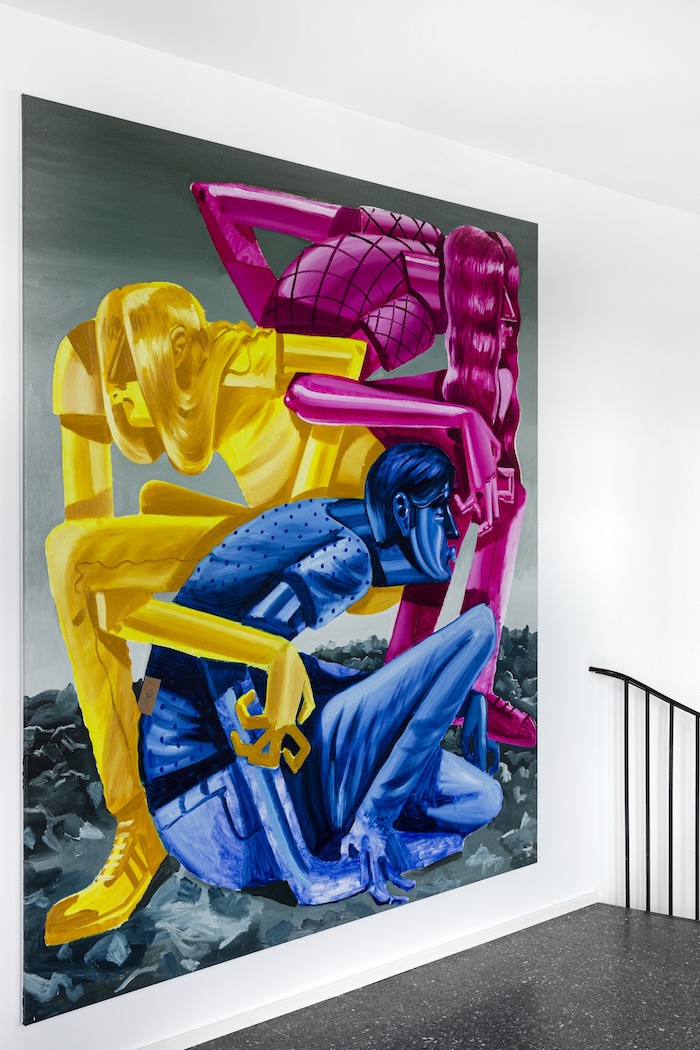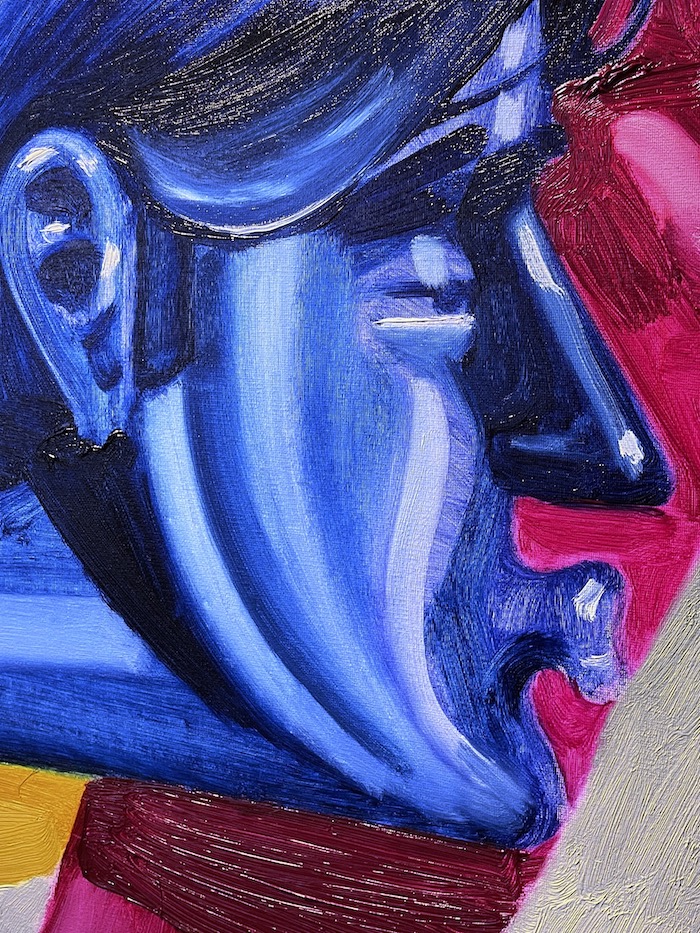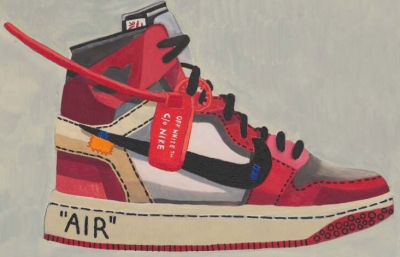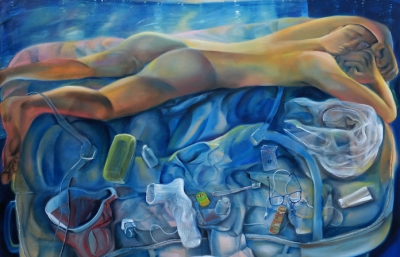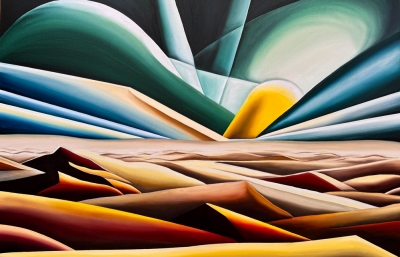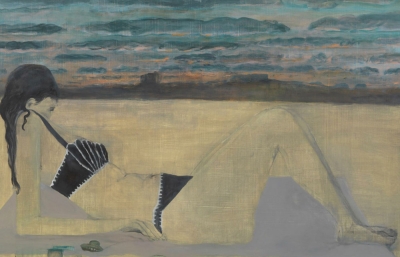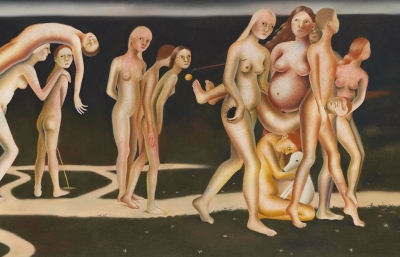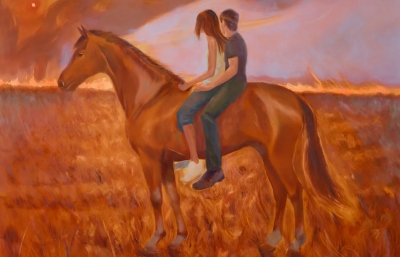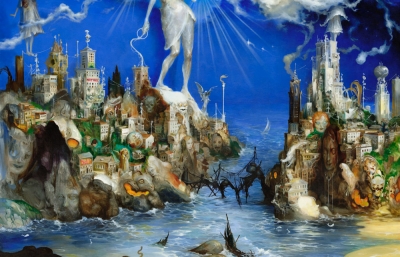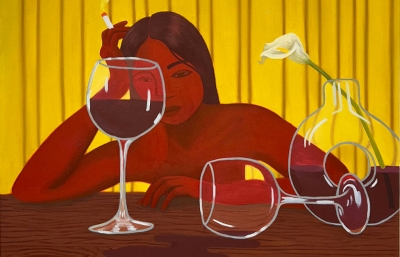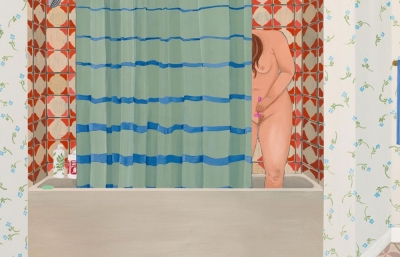This past Saturday, June 26th, Galerie Droste Wuppertal in Germany opened a major solo exhibition by one of our favorite artists, Ákos Ezer. Following the success of his last year's solo debut with the same gallery both in Wuppertal and Paris, as well as his more recent Asian debut in Hong Kong, Hungarian artist presented a new series of large scale canvases and ceramic sculptures.
And while we've been mesmerized with Ezer's paintings ever since we first saw them back in 2018, it's the combination of two mediums he currently works with that is greatly informing his work. "It's a very refreshing thing for me to work with both," the artist told us recently when we asked about the way the two practices influence his work. "I can get a lot of ideas for one from the other. I also find it important in the sense that when I think about exhibitions, the difference between the two qualities in exhibition space is refreshing as well. The presence of ceramic figures was, I think, important to my work because it expanded the universe I could only shape with my paintings until that." And indeed, while looking at the newest paintings on view at the gallery, we noticed the characters being less broken and more rubbery, having spaghetti-like limbs which is a direct effect of working with ceramic. At the same time, the way Ezer paints his sculptures strongly references his determined, confident gestural approach, making a stronger connection between the two bodies of work. In a way being singular 3D effigies of his quirky cast of characters, the ceramic busts feel closely tied up with the large canvases through unmistakable forms and the vibrant color palette that the artist works with.
"I saw lots of paintings at the university which were nearly gray painted, seemed dusty, and at the start already old looking. I decided to go against that, and use clear tones and vibrant colors, to keep everything fresh and alive," Ezer explained to us the source of his bright, candy-like colors which imbue his downcast scenes with vibrant energy. Working on a larger scale enables the artist to put more focus on the additional elements besides his bendy and elongated subjects, playing with the patterns of their clothes, their footwear, hair, as well as the elements in their surroundings. Rendered with thick and vigorously decisive brushwork, as well as application of paint straight from the tube, the images capture the artist's energy and determination while taking up as much canvas surface as possible. It's this approach to composition that makes the work so intense, all while creating an unmistakable sense of space, perspective, and volume. From Twister mat, over tennis balls, BBQ, and planks of wood, these entangled group scenes suggest some sort of group effort and relationship around leisure activities, yet each individual character seems to be existing on its own. This is creating to an atmosphere of melancholy, numbness, and insecurity, which is in constant clash with the aforementioned color palette and culminates in the title of the show. "The title refers to the presence of tension between plans and implementation, the difficulties of experiencing the personal freedom," the artist stated about the title of the exhibition. "It puts a monument in a state where we should feel good but the weight of this fact makes it impossible from the outset to live the perfect and unclouded moment." The puzzling and ever-balancing atmosphere of uncertainty can be read from characters' indifferent facial expressions which range from being entirely covered by hair or smoke to showing some sort of duck-face/whistling/kiss or smoke blowing. Such a precariousness arguably culminates in the new monochromatic paintings that Ekos introduced in this show, which utilize the tension between the vibrant colors and the depicted image in an entirely new way. — Sasha Bogojev

